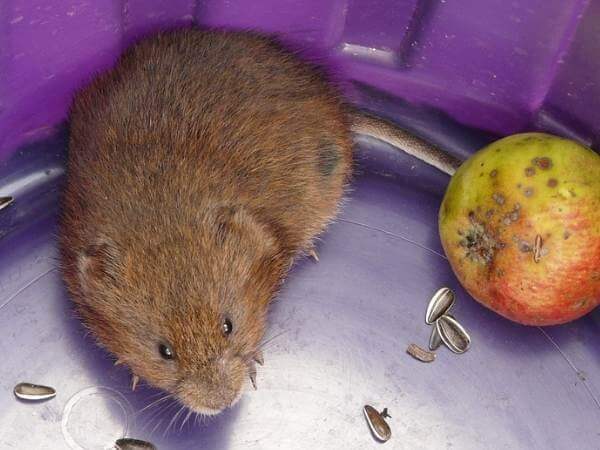Expert Techniques for Vole Control and Prevention
Expert Techniques for Vole Control and Prevention
Blog Article
Comprehensive Overview to Effective Vole Pest Control: Problem Identification and Therapy Techniques
In the realm of efficient pest control, vole infestations present a special obstacle that requires a tactical approach. These little rodents, commonly mistaken for computer mice, can ruin gardens, grass, and crops if left uncontrolled. Recognizing the indicators of vole presence and applying targeted treatment approaches are necessary elements of a successful bug management plan. By checking out the nuances of vole actions, understanding key indications of problem, and assessing a variety of control alternatives, one can develop a thorough technique to fight these evasive bugs.
Understanding Vole Behavior
Vole behavior is characterized by their tunneling behaviors and quick reproduction prices, making them a tough pest to control successfully. These little rats usually produce complex tunnel systems underground, utilizing them for sanctuary, food storage space, and transport. Voles are herbivores, eating a variety of plants, grasses, bulbs, and roots, which can cause substantial damage to yards, orchards, and grass. Their quick reproductive rate additional complicates control efforts, with females with the ability of producing several trashes in a single year, each having numerous children.
Understanding vole actions is crucial for reliable bug control strategies. By determining their burrow areas, keeping track of feeding areas, and implementing targeted control methods, such as capturing or environment adjustment, vole problems can be managed successfully.
Indications of Vole Problem

Avoidance Strategies
Carrying out reliable prevention approaches is important in decreasing vole problems and guarding greenery from their damaging feeding routines. To prevent vole invasions, it is vital to begin by eliminating potential food resources and sanctuary.
Regularly evaluating the property for signs of vole activity, such as paths and delve openings, is essential for very early detection and timely activity. If vole task is suspected, consider making use of repellents or catches strategically positioned near their paths.
Non-Lethal Control Approaches
To efficiently handle vole populaces while focusing on humane techniques, non-lethal control approaches offer useful remedies for decreasing vole damage in landscapes and gardens. One efficient approach is making use of physical obstacles such as equipment fabric or cable mesh to protect prone plants. These obstacles can be buried a minimum of 12 inches curved and deep at a 90-degree angle to stop voles from burrowing underneath. the original source Additionally, environment modification can discourage voles by decreasing their liked food sources and hiding areas. Preserving a well-mowed yard, eliminating debris, and keeping vegetation trimmed can make the environment less enticing to voles.

Lethal Control Options
One efficient approach for addressing vole invasions in landscapes and gardens involves the critical use of deadly control alternatives. When confronted with a serious vole problem that non-lethal methods have actually failed to have, executing dangerous control measures becomes crucial. One frequently employed lethal control choice is the usage of breeze catches. These catches are developed to rapidly and humanely eliminate voles upon sites activation, making them a prominent selection for lots of garden enthusiasts and landscaping companies. To increase the efficiency of breeze traps, it is recommended to put them in locations where vole task is high, such as along runways or near burrow entrances. One more deadly control choice is the use of toxic baits particularly developed to target voles. These baits consist of poisonous substance that is consumed by the voles, causing their eventual demise. However, caution should be exercised when utilizing poisonous lures to avoid damage to non-target animals or pets. Overall, when employing dangerous control alternatives, it is necessary to do so responsibly and based on regional policies to effectively manage vole infestations.
Verdict
Finally, effective vole pest control calls for a detailed understanding of vole actions, identification of indications of invasion, application of prevention techniques, and application of both deadly and non-lethal control approaches. By incorporating these techniques, people can successfully take care of vole populations and protect their residential or commercial property from damages. It is essential to resolve vole read problems quickly to stop additional concerns and minimize the effect on the surrounding setting.
Given the complex passage systems and rapid reproduction prices particular of voles, recognizing the indications of vole problem comes to be important in efficient parasite control. One of the primary signs of vole existence is the presence of surface area paths or routes in turf or snow, normally concerning 1-2 inches broad, developed as voles travel in between their burrows and food resources.To effectively manage vole populations while prioritizing humane approaches, non-lethal control strategies use functional options for lowering vole damages in landscapes and gardens.One effective method for attending to vole problems in gardens and landscapes entails the critical use of deadly control choices. vole control.In conclusion, effective vole insect control requires a detailed understanding of vole actions, recognition of indicators of problem, execution of prevention techniques, and usage of both lethal and non-lethal control methods
Report this page